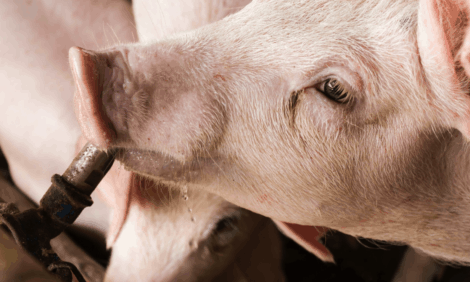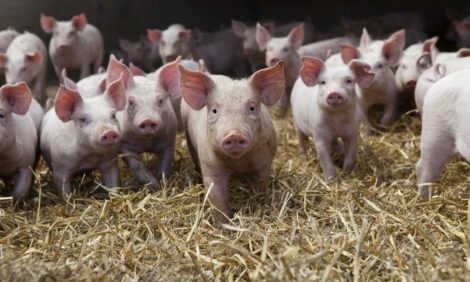



Handling Stress During Marketing of Pigs from Large Groups
Pigs from large groups tended to load more quickly but the level of physical encouragement required, physiological responses to handling and meat quality were similar regardless of group size. These are the main findings of S.M. Hayne, D.L. Whittington and H.W. Gonyou from research for Prairie Swine.Summary
When handled through the same facilities, pigs from large and small groups required similar levels of force during handling. However, pigs from large groups tended to load more quickly. Pigs from the two treatments had similar physiological responses to handling. When given adequate lairage time to recover from handling and transportation, meat quality was similar between group size treatments.
Introduction
The authors have previously shown that pigs from large groups are more socially tolerant than pigs from conventional small groups and will fight less when re-grouped, as happens during marketing. Anecdotal evidence from producers and truckers indicates that pigs from large groups are easier to handle and load. These two factors could combine to result in less marketing stress for pigs from large groups, with a potential to improve meat quality. Indeed, farms using large group autosort housing have been reported to have fewer death losses during marketing than conventional farms (Brumsted et al., 2004).
This study was conducted to compare handling attributes, stress responses and meat quality of pigs from conventional and large group auto sort pens marketed through the same facilities.

Results and Discussion
* "Pigs from small groups tended to take approximately 25 seconds longer to load up the ramp than did pigs from large groups" |
Two hundred and forty pigs raised in either conventional small groups (16-18 pigs per pen) or in large groups with auto-sort facilities (approximately 250 pigs per pen) were marketed on ten days to assess differences in response to handling and meat quality.
Pigs were loaded in groups of four pigs up a ramp onto a trailer. Transportation to the packing plant lasted 45 minutes and lairage was approximately four hours. Behavioral and physiological measures were taken prior to, during and after the handling and transport process. Standard meat quality assessment was conducted on loins from the animals 24 hours after slaughter.
Although the time taken to load a group of four pigs varied considerably, it took approximately 50 per cent longer to run pigs from small groups up the loading ramp (see Table 2; P<0.10). The need for electric prods, as defined in this study, was similar for both treatments. However, the number of shocks applied to a group, although similar statistically, reflected the amount of time needed to load pigs from each treatment.
The only differences observed in heat balance variables (temperatures, skin colour and breathing) were early in the handling of the pigs, with an increase in rectal temperature after removal from the pen, and an increase in ear temperature once on the transport trailer for the pigs from small groups (Table 1; P<0.05). Cortisol levels, which reflect acute stress, increased approximately three-fold from in the barn prior to loading, to after unloading at the plant. However, these values did not differ between large and small group treatments.



Meat quality measures evidenced significant differences between treatments for marbling, and three of the Minolta light variables. Pigs from small groups had a higher degree of marbling and higher light reflectance (L*), but also a redder colour (a*), (Table 3; P<0.05). The trends, although not statistically significant, among other meat quality scores would suggest slightly less response to stress in large group pigs (see pH, colour and Japanese colour).
This study represents a comparison of responses to handling of pigs from large and small groups on the same farm, and through the same load-out and transportation vehicle. As such, confounding that may occur when analysing treatments when farms represent different treatments was avoided. Under these conditions, only minor differences were found in handling, although pigs from large groups did tend to load more quickly.
Meat quality effects due to handling stress may have been masked by the three- to four-hour lairage time used in this study. This length of holding is preferred within the industry because it does attenuate problems during marketing, particularly if short transportation times are involved.
Conclusions
Pigs from small groups evidenced elevated rectal and ear surface temperatures early in the handling process but no differences were found after arrival at the packing plant. Difficult groups of pigs were encountered when loading in both treatments, and similar levels of force, generally involving the use of the electric prod, were used.
Pigs from small groups tended to take longer to load up the ramp than did pigs from large groups (78.7 versus 52.6 seconds per group; P<0.10). Meat quality differences were minor, with pigs from small groups having more marbling. No differences in meat quality scores reflective of differential responses to handling were evident.
April 2009








